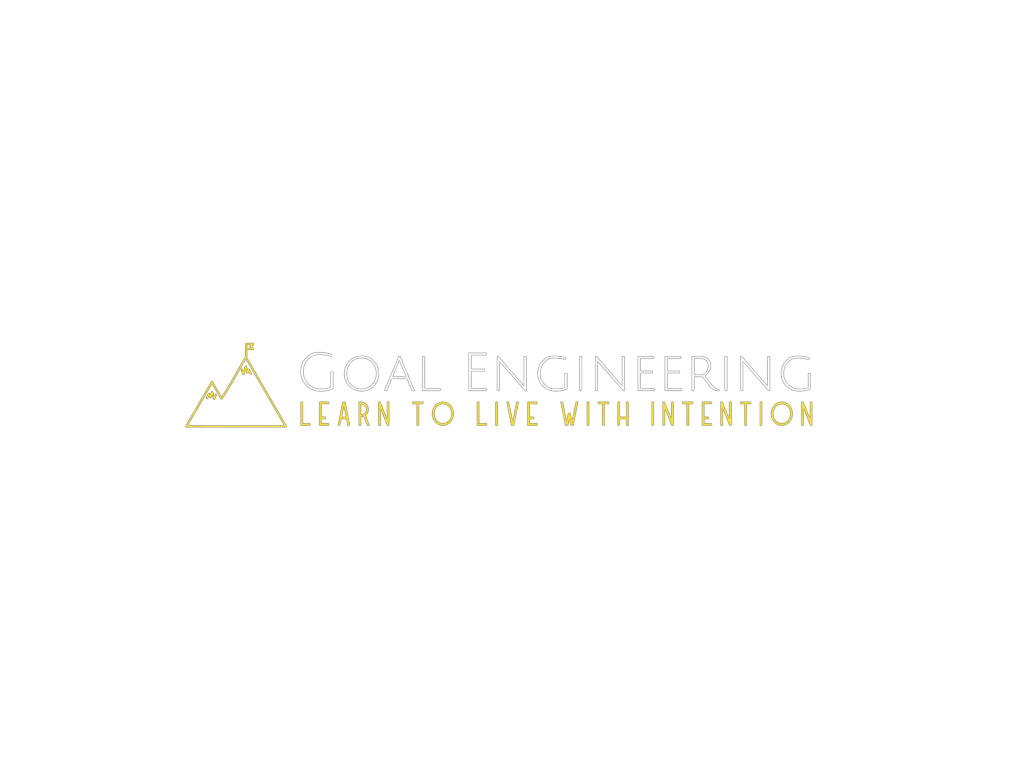Have you ever set a goal, got partway through it, and realized it wasn’t something you wanted to do? Or do you set the right goals for yourself but can’t get yourself to stick to them? If you want to reach your dreams, you’ve got to set goals and stay consistent. What you need to learn is how to set better goals.
To set better goals, do the following:
- Divide each goal into action steps and outcomes
- Set less goals so you can flourish the few
- Don’t set society’s goals for you, be confident in your own path
It doesn’t matter if you’ve struggled with goal-setting in the past, or are having a hard time with your current goals. Improving your goals is a sure path to becoming who you want and living your best life.
These are three of the best tips that I use all the time to set better goals and reach my dreams much faster.
1. Divide Each Goal Into Actions & Outcomes
Ask anyone in January what their New Year’s resolution is and it’s almost always got something to do with exercising a certain number of times a week. But simply saying “I’m going to go to the gym 3x per week” isn’t a goal, it’s a plan, or an action step.
If you want to improve your goals, you’ve got to add outcomes to your plans and action steps. Only with both can you define a clear path forward, which is the key to getting anywhere or anything you want out of life.
An outcome would be something like “lose 10 pounds” or “run a half marathon.” Outcomes are the end goal or end result that you seek to have. Find these by asking “where do I want to end up when I’m done?” or “what do I want to have by doing this action plan?”
Your action plan, then, is the steps you’re going to take to reach that outcome. It’s “going to the gym 3x per week” or “follow a diet.”
To make your outcomes and action plans even more effective, use the TAD acronym to make them specific:
- Time – Add a time to your plan, such as 30 minutes.
- Amount – Make sure your action plan has an amount, like 3x per week.
- Date – Include a date by which you’ll try to reach your outcome.
Don’t spend too long on this, though. You have to start your goals to determine how effective they are. Only by beginning can you find out how your goal is for you and adjust to make it something that works for you.
And you’ll grow much faster if you implement this action mindset and seek to be prolific rather than perfect.
“Success seems to be connected with action. Successful people keep moving. They make mistakes but don’t quit.” – Conrad Hilton
2. Set Only 4-5 Goals At a Time so You Can Flourish the Few
One afternoon a couple of years ago I was walking past a peach tree in our backyard like I often did. This time, though, I noticed something and had an idea that I hadn’t considered before.
There was a lot of fruit on each branch. So much that it looked like the branches might snap.
I remembered something about needing to thin fruit trees, so I decided to start picking the unripe fruit and throwing it away. It couldn’t hurt because that tree hadn’t ever produced very good fruit anyway.
It was hard to see so many of the little green peaches go in the trash because I knew that each one could turn into something delicious. But if what I had remembered was right, it was worth it to make the other peaches better.
Fast-forward a couple of months and the peaches were ready to eat. Because I had thinned them, we had much larger and sweeter peaches than any year before.
This experience taught me something that I’ve tried to apply to my goals ever since. Fewer is better because you can flourish at a few things, but only be mediocre at many.
You only have so much time, energy, and brainpower to use toward your goals. If you set dozens of goals each year, you spread those resources too far. That makes the “fruit,” or end result, smaller and less enjoyable.
By thinning your goals down you let yourself nurture only what is essential. The outcomes, then, are massive and delicious, just like my peaches were.
Every goal I’ve ever seen someone set falls into one of the following areas of life:
- Faith & Spirituality
- Family & Social
- Finances
- Fitness
- Fun
Think about your own goals and you’ll see that this is true for yourself, too.
These are the best areas to set goals in because feeding one makes the others thrive also, and all are necessary for overall success and happiness.
If one is suffering, it takes away from the joy the others bring. But when you make all of them thrive, it creates an upward spiral that makes everything in your life better.
This is why it’s a powerful standard to stick to when thinning your goals. Narrow down your goals to only one in each of these categories and you’ll flourish the few.
To get to this point, start by listing out 5-6 highest-impact goals in each category. Then narrow it down to just one by asking yourself this question from Gary Keller’s book The ONE Thing:
“What’s the One Thing I can do such that by doing it everything else will be easier or unnecessary?”
Having fewer goals means you have better goals. And with that improvement to your goals, you’re more likely to achieve them and live the life you dream of.
“Essentialism is not about how to get more things done; it’s about how to get the right things done. It doesn’t mean just doing less for the sake of less either. It is about making the wisest possible investment of your time and energy in order to operate at our highest point of contribution by doing only what is essential.” – Greg McKeown
3. Don’t Just Do What Others Want, Set Goals You Love
Growing up, society taught you that to be happy you needed schooling, a good job, and a family. This has the right components of happiness in it because happiness always includes social connections, stable income, and meaningful work.
But the details of those things, like how and when you get them, are up to you.
Maybe everybody tells you that you should be an engineer. You go to college, get the degree, spend years working, then realize it’s not really your thing.
This is what happened to me, and is just one example of how you can get to the top of a ladder that’s leaning against the wrong wall.
Don’t get me wrong, I’m grateful for my engineering career and I do enjoy it well enough. But it was always an uphill battle to set goals as an engineer and achieve them. An uphill battle that I’ve since found was unnecessary.
A few years into being an engineer I discovered writing and felt like it might be what I really wanted to do. After trying it out for a little while I was amazed at how much less resistance there was to growing as a writer. It was way easier to set goals and follow through with them in this new field than it was as an engineer.
If your goals are what someone else wants for you, or are making you unhappy, then quit them! There’s no sense in continuing to climb to get to somewhere you don’t want to be.
By quitting the goals you don’t want to go after, you also free up your time and energy to work on what lights you up inside. And when you start going after those things, the lack of resistance will take you farther and higher than ever.
Don’t feel like you have to have it all figured out right away though. It takes time to figure out your path and passions, and that’s okay. Experiment, be grateful for the gift of life itself, and keep going and you’ll find the right ladders to climb.
“You may get to the very top of the ladder, and then find it has not been leaning against the right wall.” – Allen Raine
Summary
Setting goals is the only way to change your life for the better. There’s a lot of noise around the right way to do it though, so it’s hard to set good goals.
But you can set better goals with three simple steps:
- Divide your goals into action steps and outcomes.
- Set fewer goals so you can flourish the few.
- Go for goals that light you up inside, instead of what everybody else says.
I’ve been doing these three for a while now and they work. I’m not perfect and still sometimes set imperfect goals. But each time I apply these steps my goals improve. And so does my life.





